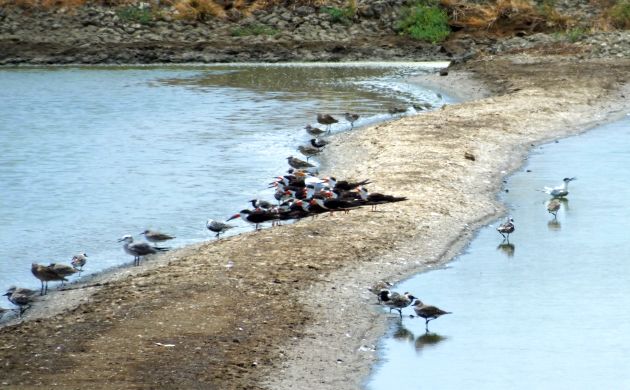
Shorebirds are part of the avian scene in Costa Rica, pretty much all year long. During the winter months, thousands of small wading birds frequent the mud flats of the Gulf of Nicoya as well as estuaries on both coasts. Even more pass through Costa Rica during spring and fall migration, and in summer, you can cross paths with an errant Whimbrel and other shorebirds that opt to extend the vacation in Costa Rica rather than heading way north to the boggy breeding grounds. When we factor in a precarious trip punctuated with such hazards as stalking, demon-flight Peregrines, trigger happy humans, missing habitats, and other nasty situations, maybe those non-breeders are the smart ones?
However, although some of those avian candidates for high intelligence can be seen in June and July, the best times for shorebirding are of course during migration. This is when millions of sandpipers and plovers are on the move and since they are made for serious flight, heck, who knows what might show up! It adds that jackpot flavor to birding at every mud flat at any time so you better be on your toes and ready to recognize the odd bird out of the flock. It might be a Sharp-tailed Sand that lost its way somewhere around the Bering Strait. There might be a Ruff or two out there in some coastal rice field, followed a week later by an equally lost Curlew Sandpiper.
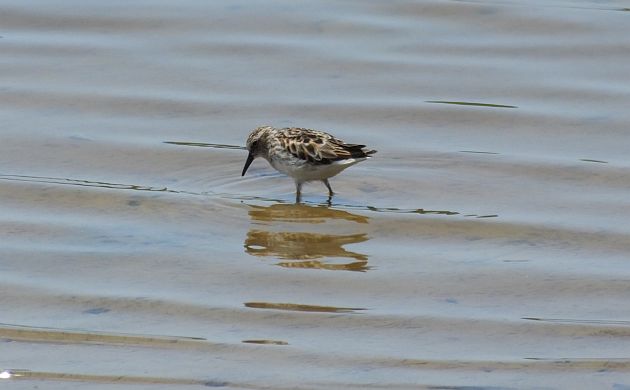
Keep scanning through the Least Sandpipers to look for that stint.
Those birds are out there, even in Costa Rica, and I bet more are waiting to be found. The only problem is that glassing such rarities is tougher than finding that good old needle in a giant haystack, and, while looking for it wearing blur-goggles because in addition to needing to know how to recognize those lost individuals, the odds at finding them are very much not in our favor because (1) we don’t have enough people looking, and (2) we don’t have enough access to shorebird habitats. I guess another factor to consider is that Costa Rica is small enough for any of these birds to just fly right over the entire country.
But, you will never find the needle if you never look and since there are lots of other nice birds to see, I did a shorebirding trip last Saturday with by friend Susan. The high tides were near noon and that meant birding in an outdoor furnace but since Saturday coincided with the same time frame of our best mega day of shorebirds (highlighted by one of Costa Rica’s only Hudsonian Godwit records), I was eager to get out there and look.
After starting the morning with an unsuccessful search for Rusty Sparrow in Orotina, we hit three main shorebird sites. These were the Guacalillo lagoons (basically part of the Tarcoles River estuary), the Chomes area, and the salt ponds at Punta Morales (Cocorocas).
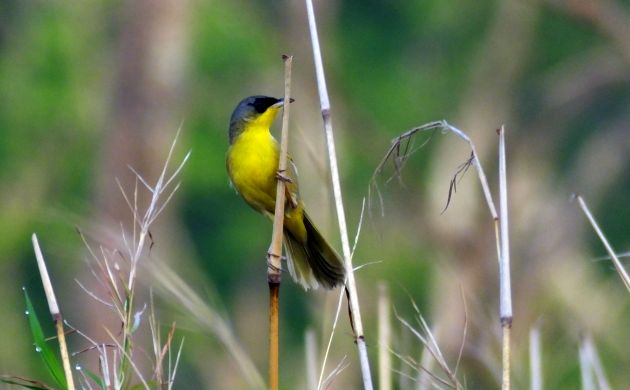
No sparrow but the dawn chorus was a treat. This Gray-crowned Yellowthroat came in to pishing.
After Orotina, we drove south and then towards the coast on the road to Guacalillo.
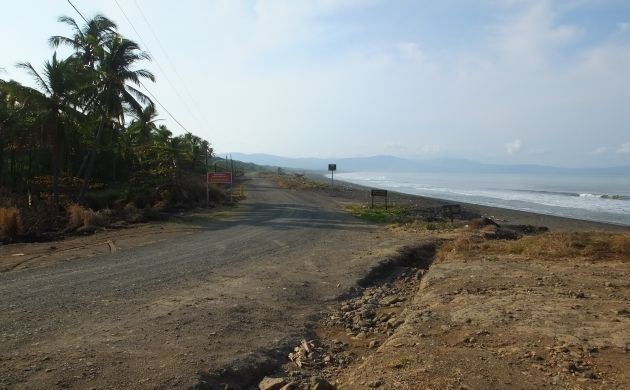
The road that parallels this long stretch of beach eventually reaches an area of lagoons that can hold a few birds, no birds, or a bunch. It’s unpredictable but because more than one mega has been found there in the past, it’s always worth checking. When we looked, we did find some plovers and a few other shorebirds and egrets but not much else, and nothing to get excited about. So, after double and triple scanning, we drove back to the main road and directed the vehicle towards the drier north. We left the highway at the entrance road to Chomes (a good birding route unto itself) and made one stop to scan the farm fields.

They were filled with blooming cotton and not much else.
We were surprised to not find any thick-knees but given the probable massive application of poison, maybe that was a good thing. No Upland Sandpipers were seen in barren stretches of field but we did scope a pair of distant FOY Harriss’s Hawks! This is a regular site for this species.
At Chomes, the number of squatter shacks continues to grow and the view of the first lagoon is nearly blocked by them. Will these people catch and eat shorebirds? Given their apparent desperate situation, I wouldn’t be surprised. Further on, most of Chomes was dry although the final lagoons near the beach had water but despite the presence of supposed suitable habitat, the shorebirds were a near bust. Given our major success a few years ago, this was a big surprise. Did they already pass through? I kind of doubt that. Were they just somewhere else? Maybe, or perhaps the birds came in the following day. Who knows but that’s why I wish we had more regular monitoring of that site.
Seeing that few birds were around, we didn’t tarry at Chomes and instead, made our way over to Punta Morales. This involved the fording of a river but given the dry weather, that turned out to be an easy task. Over at the Cocorocas site, we finally met with a fair number of shorebirds although still not in the huge numbers I had hoped for. Don’t get me wrong, it was still great to check out several molting Stilt Sandpipers, a bunch of tundra loving Black-bellied Plovers, a handful of Marbled Godwits, a hefty flock of Black Skimmers, and some other expected species but numbers were much lower than during the winter months. Nor were there any phalaropes or other year birds.
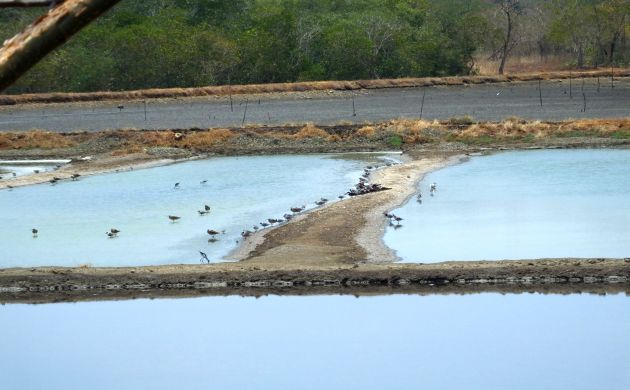
Some of the birds at Morales.
Oh well, it was still fun to try and the cloudy weather did cut down on the furnace action. That didn’t stop us from getting ice cream at the Monteverde cafe/ice cream stop on the highway- that choco-mint and Guanabana ice cream hit the spot! I might give one more try for spring shorebirds because who knows what might swing out of the sky and settle down for a bit of mud flat feeding and rest during that long trip north? If the birds don’t show, well, at least the ice cream will be in the house!













Leave a Comment